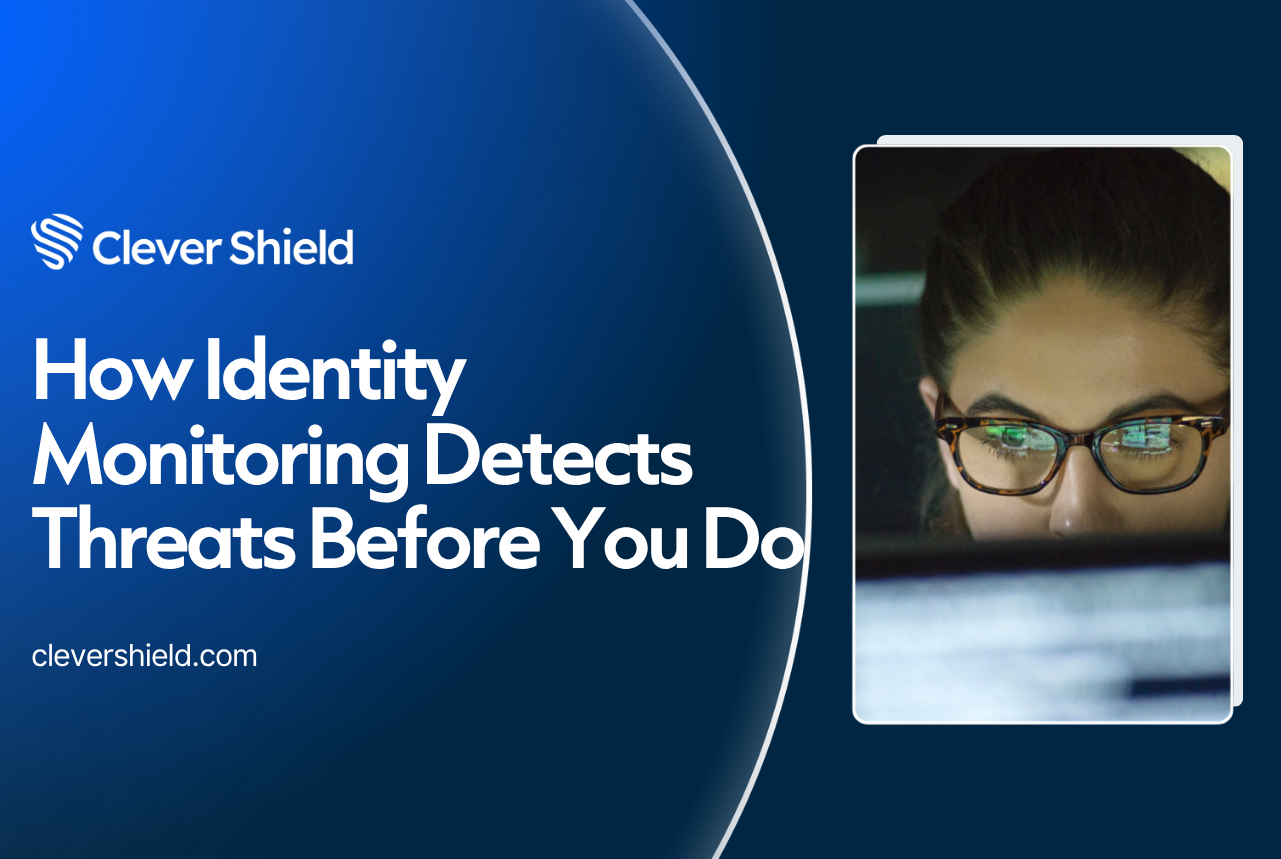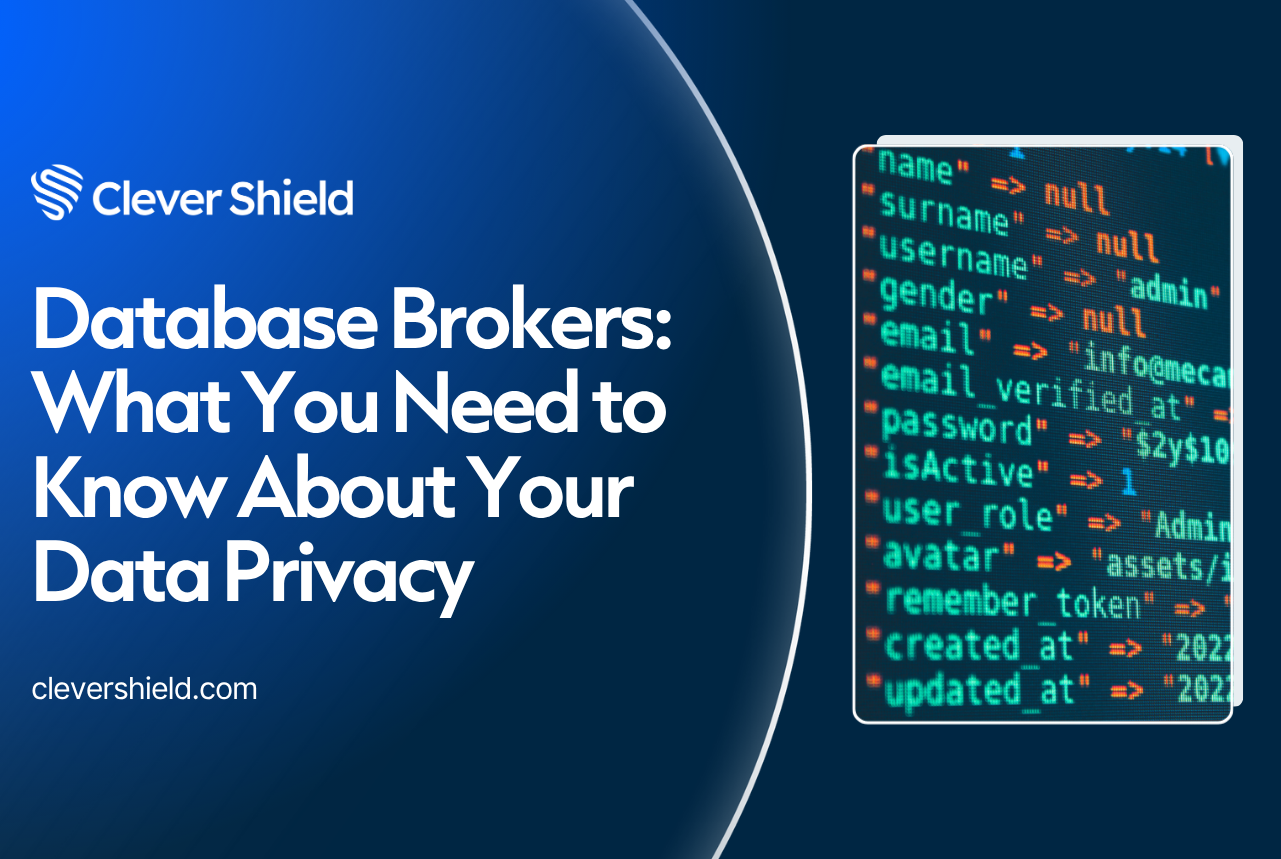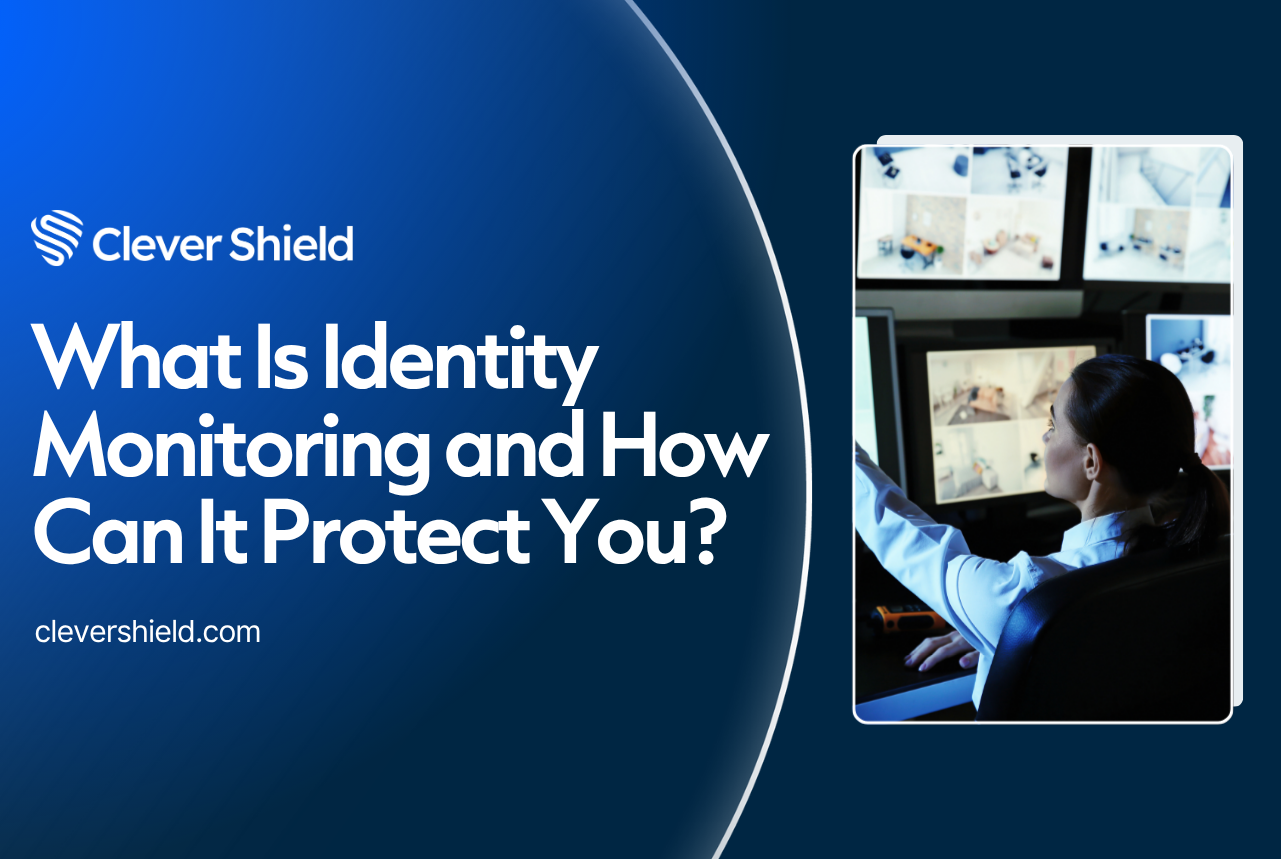You might think you’d know right away if someone stole your identity — a strange charge on your card, a credit denial, or a call from your bank.
But in reality, identity theft usually happens quietly, over weeks or months, before any red flags appear.
That’s why identity monitoring exists: it acts as an early-warning system that detects suspicious activity — from stolen credentials to data exposures — before they can turn into real damage.
Let’s break down how it works, what it can (and can’t) detect, and why Clever Shield’s active protection goes beyond alerts to stop identity threats before they spread.
1. What Is Identity Monitoring?
Identity monitoring is the ongoing process of scanning online and offline sources to detect when your personal information appears where it shouldn’t.
This includes:
- Dark web marketplaces
- Data broker sites
- Public records and social platforms
- Compromised credential databases
- Breach dumps shared by hackers
Think of it as a security alarm for your identity. Instead of waiting for fraud to happen, it looks for signs that your personal data — name, Social Security Number, phone, or email — is circulating online.
According to the Federal Trade Commission (FTC), early detection is critical because most victims don’t realize they’ve been compromised until months after the first exposure.
2. How Identity Monitoring Detects Threats Before You Do
There are three main ways identity monitoring finds problems before you notice them:
A. Credential Tracking on the Dark Web
When hackers steal credentials from breached sites, they often dump them on the dark web — underground forums where stolen data is traded and sold.
Monitoring tools continuously scan these spaces for your email, password combinations, or other identifiers.
If your credentials appear, you’ll get an alert before criminals can use them to access your accounts.
For instance, if your Gmail password from an old breach is sold, a monitoring alert gives you the chance to change it before someone uses it to reset your banking logins.
B. Exposure Alerts from Data Brokers and Public Databases
Identity monitoring also detects when your personal details (like address, relatives, or phone number) are posted on data broker sites — the ones that sell personal info to advertisers, recruiters, and anyone willing to pay.
Each time your information is found, the system sends an alert so you can take action before scammers or phishers exploit it.
The Consumer Financial Protection Bureau (CFPB) notes that these exposures can lead to targeted fraud attempts or synthetic identity theft — when criminals mix your data with fake details to open new accounts.
C. Real-Time Alerts for Unusual Activity
Beyond breaches and brokers, modern monitoring also watches for behavioral patterns that signal fraud — like:
- A sudden address change on a credit file
- An unauthorized credit inquiry
- New accounts opened in your name
These alerts don’t come from the dark web — they’re drawn from financial and government databases, offering a near real-time snapshot of activity that could indicate stolen identity use.
By the time your bank calls, the damage is done.
Identity monitoring calls first.
3. What Traditional Identity Monitoring Misses
Here’s the problem: alerts alone don’t fix the issue.
Most monitoring tools simply tell you your information was found — but they don’t remove it or prevent future exposures.
That’s like your smoke detector going off, but no one putting out the fire.
And once your data appears in one place, it spreads fast: data brokers share and resell records, meaning a single exposure can lead to dozens of new listings within days.
According to CISA, this “secondary propagation” is what makes identity protection so complex — the same data keeps resurfacing even after initial removal requests.
4. Why Real-Time Response Matters
Speed is everything in identity protection.
The faster you know about a leak, the faster you can:
- Change compromised passwords
- Freeze your credit reports
- Contact your financial institutions
- Stop further use of stolen data
But unless you act immediately, criminals often move faster than consumers can react.
That’s why Clever Shield takes the concept of identity monitoring one step further — combining detection with automated removal and restoration.
5. How Clever Shield Detects and Neutralizes Threats
Clever Shield doesn’t just alert you — it acts.
Here’s what makes its monitoring system more advanced than traditional tools:
- Comprehensive Scanning:
It monitors the dark web, data brokers, and exposed credential databases for your personal identifiers in real time. - Verified Exposure Reports:
Every alert includes context — where your data was found, when it appeared, and what risks it poses. - Automated Data Removal:
Clever Shield’s licensed experts initiate removal requests within 24 hours to force data brokers to delete your records. - Continuous Monitoring:
If the same data resurfaces elsewhere, Clever Shield tracks it and removes it again automatically. - Identity Restoration Support:
If identity theft occurs, users are backed by $1 million in identity theft insurance and hands-on restoration assistance.
This means you’re not just notified of threats — you’re protected against them.
6. Why “Real-Time Alerts” Are More Than Notifications
Some users ignore alerts, assuming they’re just another email.
But in identity protection, alerts are time-sensitive signals — the sooner you act, the less damage criminals can do.
Clever Shield’s alert system doesn’t just notify; it prioritizes and explains the severity of each risk.
For example:
- “Your data was found on a broker site” → Removal initiated.
- “Your email appeared in a dark web breach” → Password change recommended.
- “New loan inquiry detected” → Freeze credit immediately.
By turning alerts into actions, Clever Shield helps users go from reactive to proactive.
7. How Identity Monitoring Saves You Time and Stress
Identity theft recovery can take hundreds of hours — filing reports, closing fraudulent accounts, and disputing charges.
Early detection drastically reduces that burden.
Instead of waiting for fraud to appear on your credit report, monitoring catches the warning signs at the data level — where the threat starts.
The AARP Fraud Watch Network notes that victims who receive early alerts often prevent major financial losses entirely.
8. Taking Control of Your Digital Identity
The digital world isn’t slowing down, and neither is the trade in personal data.
But tools like Clever Shield give you a way to stay ahead of identity theft instead of cleaning up afterward.
Here’s how to start:
✅ Run a free scan to see if your personal data is already exposed.
✅ Review alerts for any active exposures or dark web listings.
✅ Activate automated protection to remove your information and stop it from returning.
It only takes a minute — but it could save you months of recovery later.
Final Thoughts: Detection Is Only the Beginning
Identity monitoring is your first line of defense — but detection alone isn’t enough.
To truly protect yourself, you need a system that detects, reacts, and removes.
That’s where Clever Shield stands apart:
It doesn’t just watch for threats — it eliminates them.
👉 Run your free Clever Shield scan today and see where your information may already be exposed.







